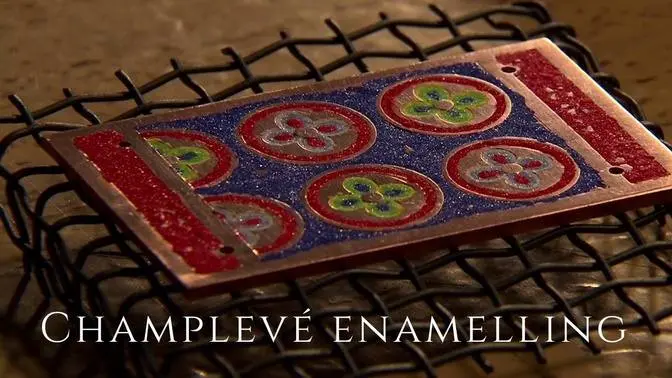Enamelling is a type of ancient decorative art seen across cultures. This technique is most often used in goldsmithery to decorate metal items. It can also be associated with glass or ceramic objects.
Despite several different techniques, champlevé enamelling was one of the most common in Medieval . The word champlevé means literally 'raised fields', referring to the way that beds were dug out of a copper plate to receive the powdered enamel. This is a decorative technique that fuses a powdered glassy material into a recess in a metal surface through the application of heat.
In this video you will see how a small plaque based on a detail from a reliquary chest made around 1180 in Limoges is recreated. It demonstrates the key stages involved in producing champlevé enamel. While the basic process remains unchanged, medieval enamel craftsmen used kilns fuelled with charcoal and relied on their assessment when firing the enamel plaques.
Between the years 1100 – 1250, specialist metalworkers flourished in the areas around Cologne (Germany), Liège (Belgium) and Limoges (France). They supplied monasteries and churches with vessels essential for the rituals of the church, objects such as chalices, crosses, candlesticks, altarpieces and shrines. The technique of enamelling used intense heat to fuse glass onto a prepared metal surface, allowing the metalworker to create brightly coloured images.
Process for champlevé enamelling:
00:00 - Medieval casket
00:43 - Cutting and marking the copper
01:16 - Medieval bow drill
01:28 - Embedding into wax
01:43 - Carving troughs
01:56 - Making enamel
02:22 - Applying enamel with a goose quill
02:38 - Firing process
03:14 - Polishing with carborundum and cleaning the surface
03:32 - Wrigglework and adding decoration
03:45 - Final enamelled plaque
Subscribe to our channel on Gan Jing World so you never miss a new video.



Leave a Comment